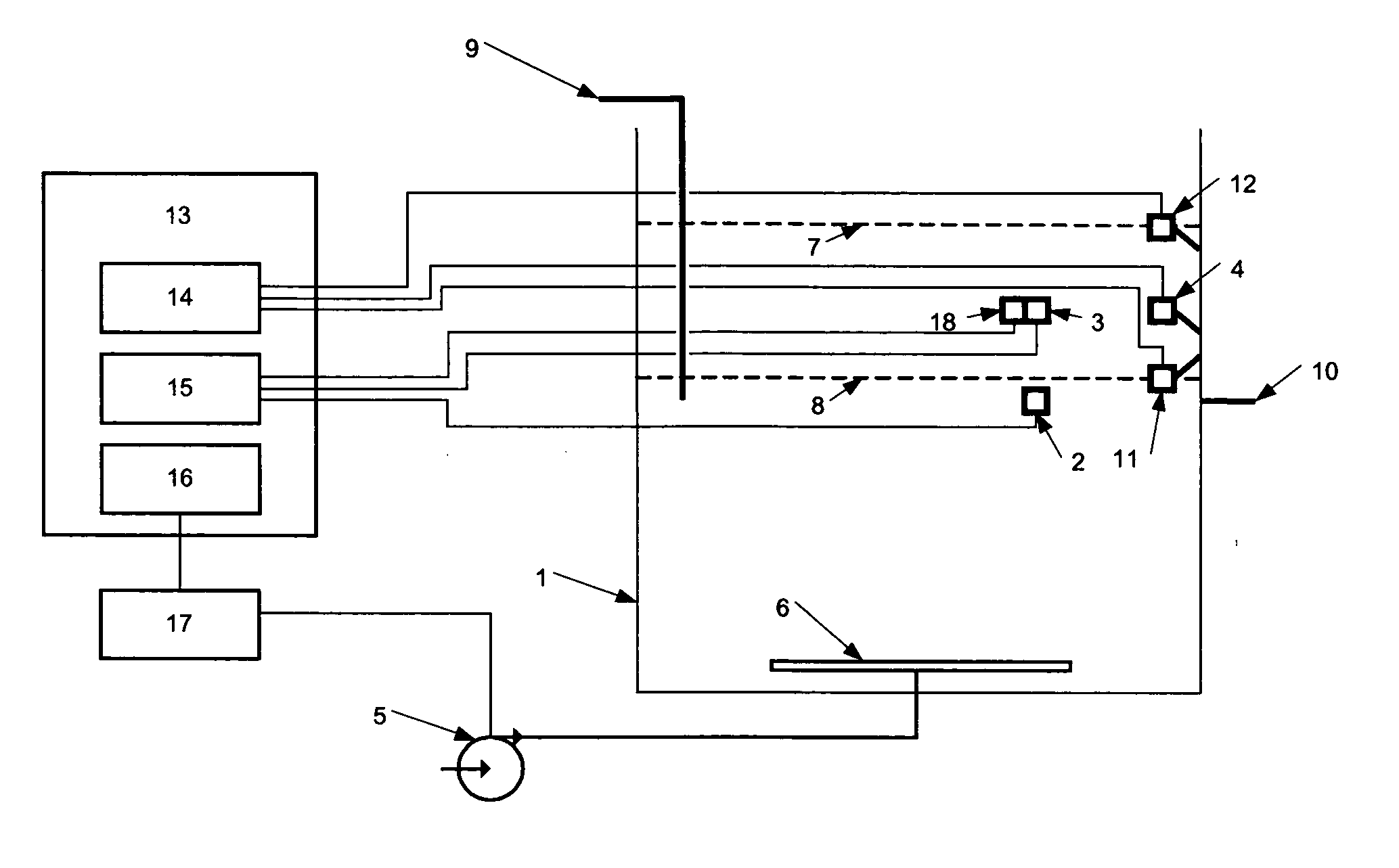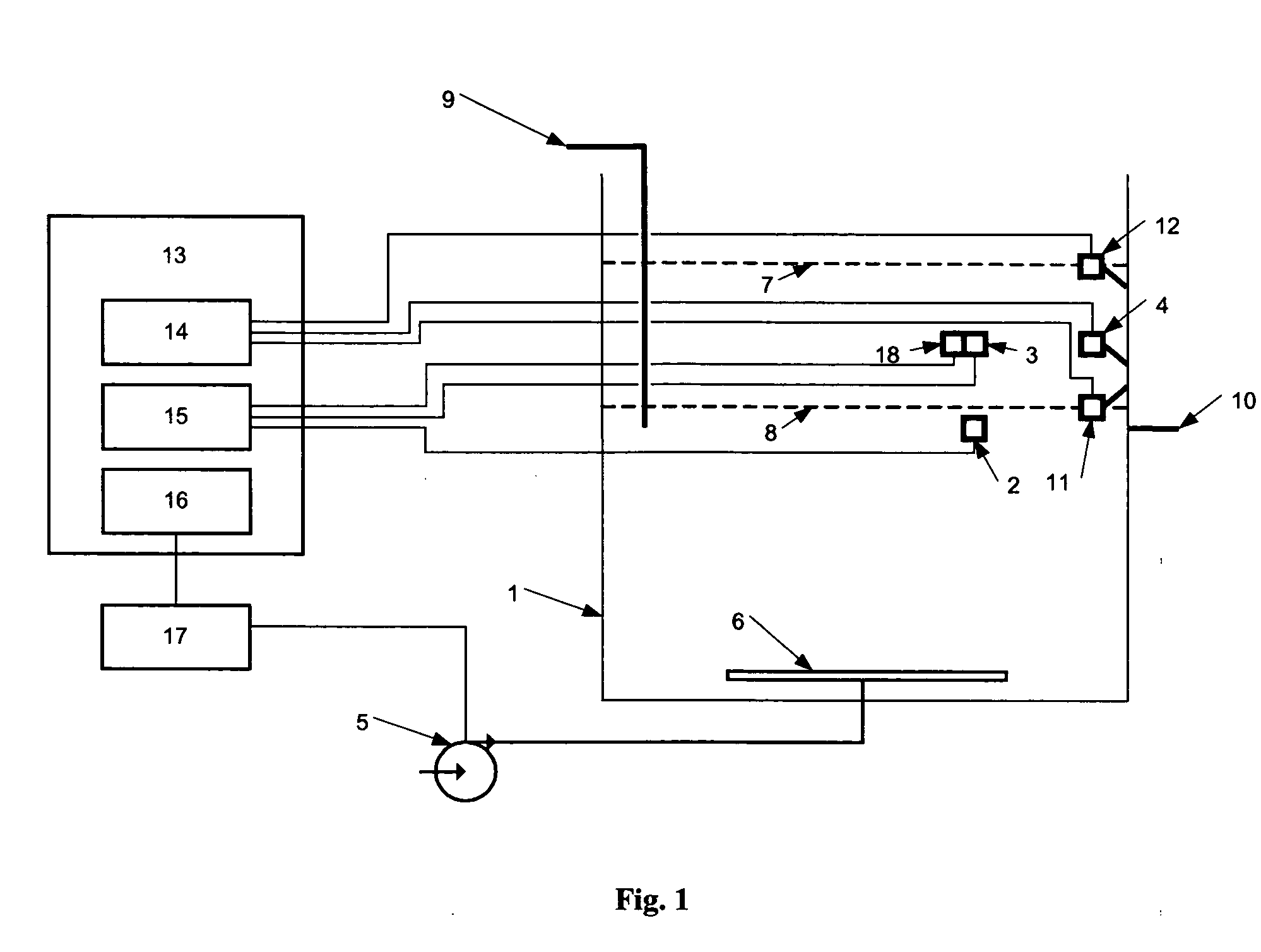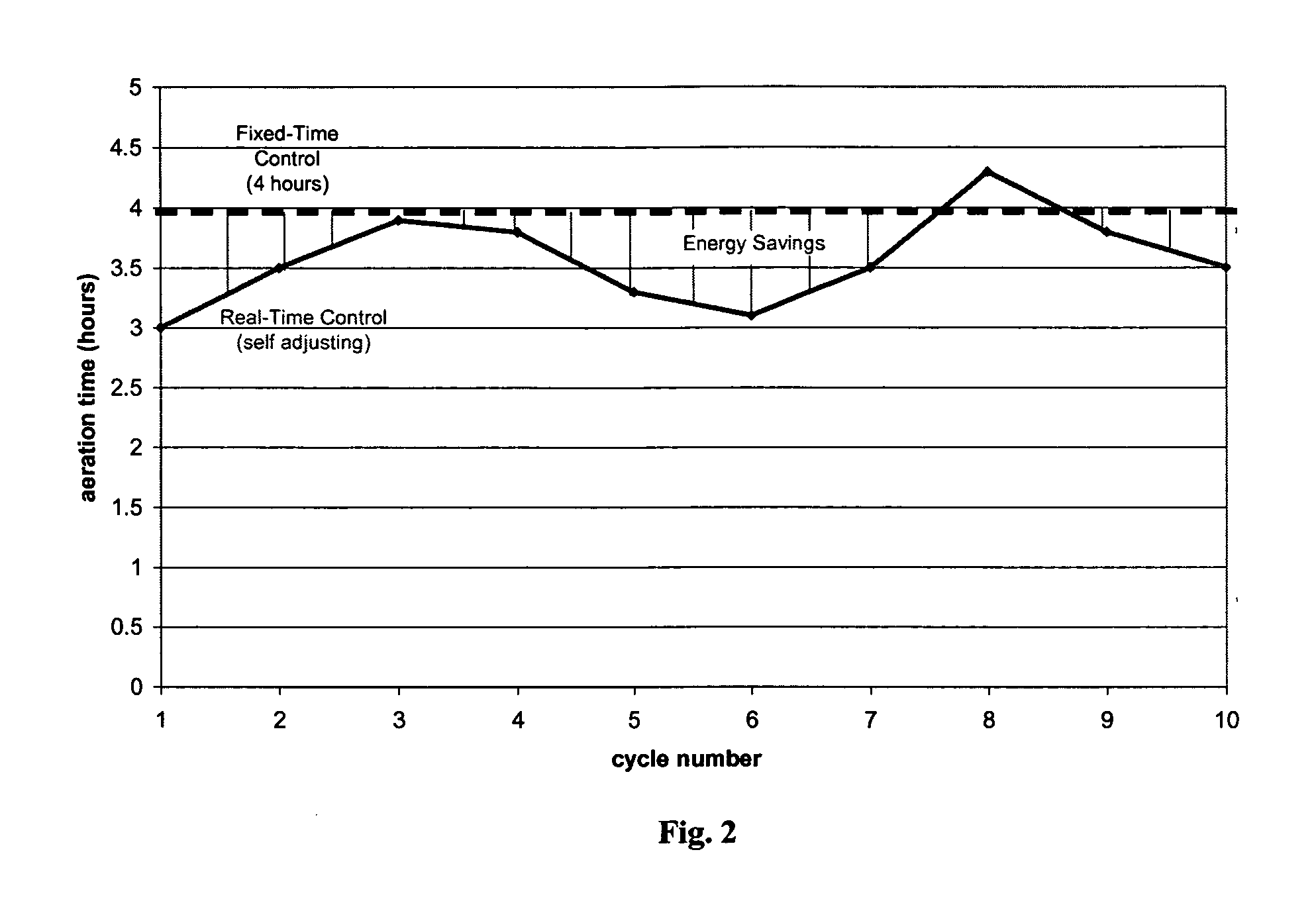Sequential batch reactor wastewater treatment process
a batch reactor and wastewater technology, applied in the direction of water treatment parameter control, water/sludge/sewage treatment, moving filter element filter, etc., can solve the problems of large installation cost, major contributor to operation cost, and most of this water is too salty to be of any use, so as to improve energy efficiency, improve the effect of biological nutrient removal, and improve the effect of accuracy and precision
- Summary
- Abstract
- Description
- Claims
- Application Information
AI Technical Summary
Benefits of technology
Problems solved by technology
Method used
Image
Examples
Embodiment Construction
[0022] The preferred embodiment of an improved SBR wastewater treatment system according to the invention is generally illustrated in FIG. 1.
Equipment
[0023] During the fill phase, wastewater to be treated is placed in a tank 1 having a high water level 7 and a low water level 8. The high water level 7 is located at the height at which the tank 1 is at maximum capacity. After the tank 1 is decanted (i.e. the clarified liquid removed), the water is at the low water level 8. The tank 1 is equipped with an inlet 9 through which wastewater enters the tank 1 and an outlet 10 through which effluent exits the tank 1. An upper DO sensor float switch 4 mounted in tank 1 monitors the level of wastewater in the tank 1. A low level float switch 11, a high level float switch 12, a lower DO sensor 2, and an upper DO sensor 3 are also installed in the tank 1. When the water reaches the upper DO sensor float switch 4 during filling, a signal is sent to the programmable logic controller (PLC) 13 t...
PUM
| Property | Measurement | Unit |
|---|---|---|
| Angle | aaaaa | aaaaa |
| Concentration | aaaaa | aaaaa |
| Level | aaaaa | aaaaa |
Abstract
Description
Claims
Application Information
 Login to View More
Login to View More - R&D
- Intellectual Property
- Life Sciences
- Materials
- Tech Scout
- Unparalleled Data Quality
- Higher Quality Content
- 60% Fewer Hallucinations
Browse by: Latest US Patents, China's latest patents, Technical Efficacy Thesaurus, Application Domain, Technology Topic, Popular Technical Reports.
© 2025 PatSnap. All rights reserved.Legal|Privacy policy|Modern Slavery Act Transparency Statement|Sitemap|About US| Contact US: help@patsnap.com



